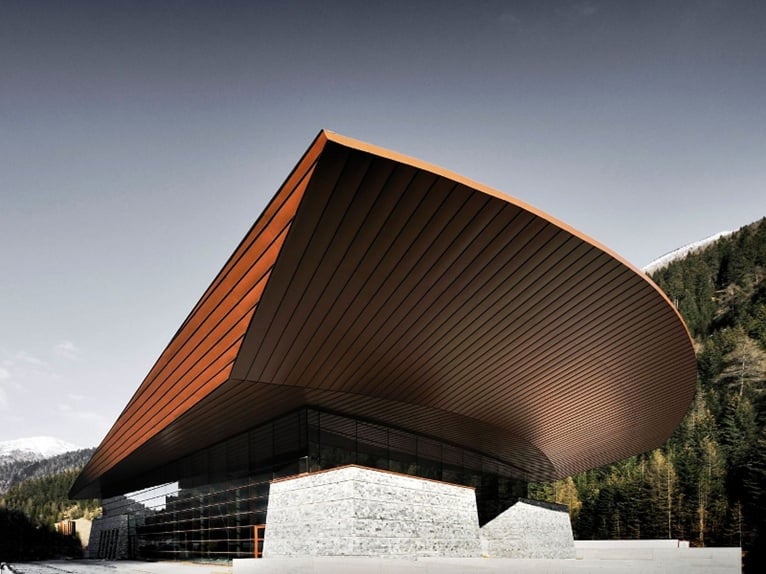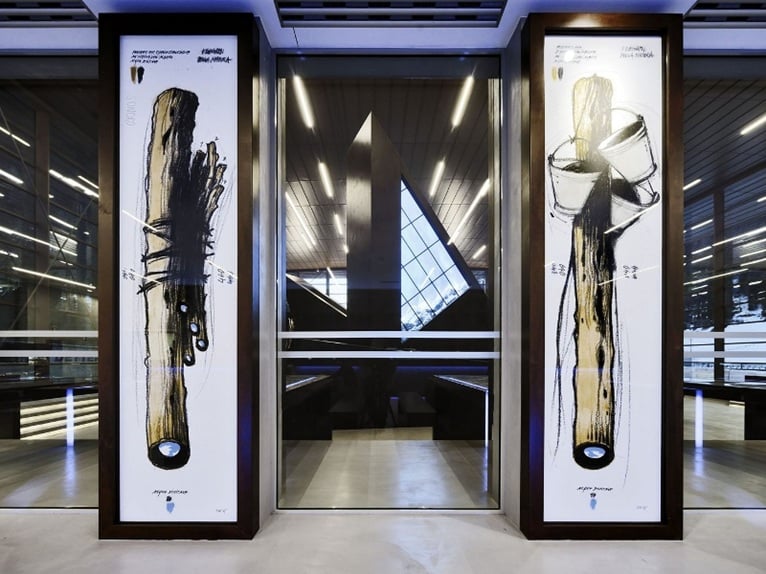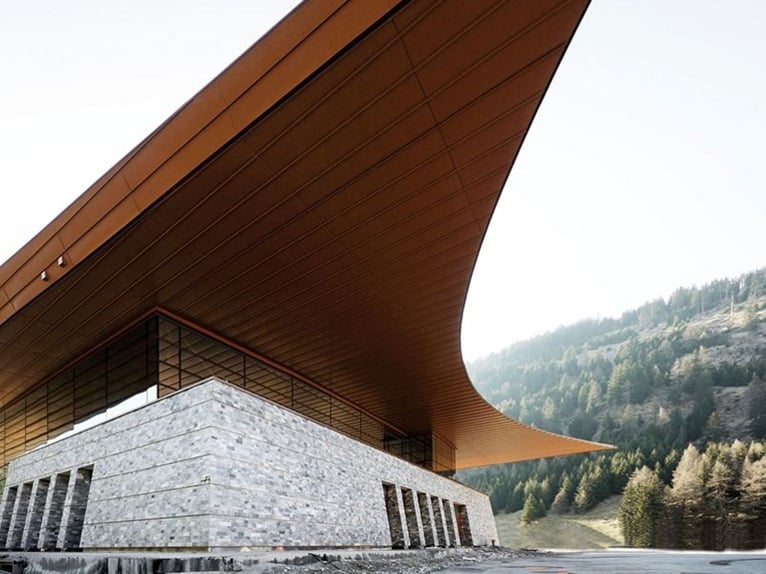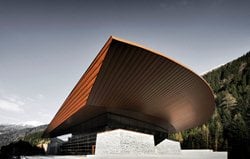 Later this month, in the vicinity of the former customs house on the Italy/Austria border, the Plessi Museum, an innovative architectural structure, will be officially opened. Inside it will house a permanent exhibition dedicated to the art of Fabrizio Plessi (born in Reggio Emilia in 1940, but Venetian by adoption), one of the most popular Italian and internationally renowned masters.
Later this month, in the vicinity of the former customs house on the Italy/Austria border, the Plessi Museum, an innovative architectural structure, will be officially opened. Inside it will house a permanent exhibition dedicated to the art of Fabrizio Plessi (born in Reggio Emilia in 1940, but Venetian by adoption), one of the most popular Italian and internationally renowned masters.
Promoted by Autostrada del Brennero spa, the building designed by engineer Carlo Costa, is the first Italian example of museum space on the motorway and will be a symbol of connection between the Mediterranean and central Europe, where, from the end of World War I to when the Treaty of Schengen came into force (1st January 1995), the customs-house played a role of separator between the Latin and Germanic world.
 The new complex also has a convention center, a refreshment area, a service area, and represents a formal and functional experimentation, capable of transforming the traditional stopping area, into a place devoted to culture.
The new complex also has a convention center, a refreshment area, a service area, and represents a formal and functional experimentation, capable of transforming the traditional stopping area, into a place devoted to culture.
"The challenge - asserts Paolo Duiella, the Autostrada del Brenner SpA President - that our era presents us with, is not only a challenge in terms of technology or efficiency.”. We need to work considerably on cultural aspects because the world we are living in today needs bold acts that look to the future. For this reason, in imagining a motorway that is not just safe and fast, we are also working to create an infrastructure that is perceived as a resource by the surrounding regions and a means for their development. The museum at the Brenner Pass fits into this philosophy: a stop along the motorway has become an opportunity for a fundamental cultural and aesthetic experience”
 Inside, the Plessi Museum will be marked by the presence of the large-scale installation that the artist created in 2000 for the Hannover Expo designed to celebrate the Euregio, the joint cross-border cooperation of the regions that made up the historic Tirol. It is a sculpture that combines three compositions representing the provinces of Trento, Bolzano and Innsbruck, conceived as an artificial mountainous landscape: an alpine environment to cross and to experience technologically from the inside.
Inside, the Plessi Museum will be marked by the presence of the large-scale installation that the artist created in 2000 for the Hannover Expo designed to celebrate the Euregio, the joint cross-border cooperation of the regions that made up the historic Tirol. It is a sculpture that combines three compositions representing the provinces of Trento, Bolzano and Innsbruck, conceived as an artificial mountainous landscape: an alpine environment to cross and to experience technologically from the inside.
 Curated by Fabrizio Plessi, the exhibition itinerary includes video installations, sculptures, graphic and pictorial presences. The artist has also designed the museum set-up, designing the tables, chairs, workbenches and Corten steel shelves.
Curated by Fabrizio Plessi, the exhibition itinerary includes video installations, sculptures, graphic and pictorial presences. The artist has also designed the museum set-up, designing the tables, chairs, workbenches and Corten steel shelves.
The expressive code of the works exhibited at the Museum revolves around the theme of water that has been behind many of Plessi's installations, films, videotapes, and performances since 1968.
 This element is capable of triggering pictorial visions of great beauty, as the Plessi himself conforms: “I think that video images and water constitute a perfect pair: water is a shimmering, ancient, ancestral, primordial element, a video is an element of contemporary times: both are fluid, unstable. Both give off a blue glow [...]. “Water - continues Plessi - has now become digital thanks to the magic of modern technology and will continue to flow forever, luminescent and alive, able to enchant and surprise us just like the water in seventeenth-century fountains in Rome. Thus, the miracle of Art continues to repeat itself like an inexhaustible replay through history.”
This element is capable of triggering pictorial visions of great beauty, as the Plessi himself conforms: “I think that video images and water constitute a perfect pair: water is a shimmering, ancient, ancestral, primordial element, a video is an element of contemporary times: both are fluid, unstable. Both give off a blue glow [...]. “Water - continues Plessi - has now become digital thanks to the magic of modern technology and will continue to flow forever, luminescent and alive, able to enchant and surprise us just like the water in seventeenth-century fountains in Rome. Thus, the miracle of Art continues to repeat itself like an inexhaustible replay through history.”
The Plessi Museum - whose area is about 13,000 square meters, a length of 55 meters and a width of 30 meters - is organised as a large glass case surmounted by a large roof capable of relating the architecture with the surrounding landscape. The great hall with a cathedral ceiling (12.90 m) is conceived as a veritable museum space, while the conference centre is intended to become a privileged venue for cultural and institutional meetings concerning the relationships between the Italian and Germanic world. The connection to the external spaces has been unravelled by Carlo Costa by mounting glass walls that ensure a perfect visual interpenetration between the natural and the artificial element.
 The large central pool thus becomes an all-absorbing space made of sounds and images: a veritable indoor plaza, a modern sensorial agora where encountering Fabrizio Plessi's work becomes not only an aesthetic experience but also a social and environmental one.
The large central pool thus becomes an all-absorbing space made of sounds and images: a veritable indoor plaza, a modern sensorial agora where encountering Fabrizio Plessi's work becomes not only an aesthetic experience but also a social and environmental one.



 25
25
comment